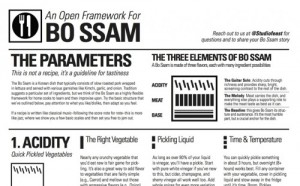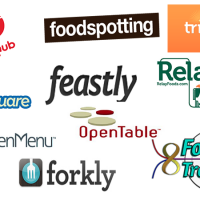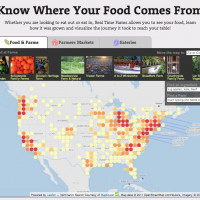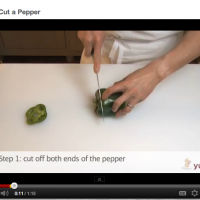I am a self-proclaimed foodie in New York City. My latest discoveries: Littleneck of Brooklyn for amazing oysters, and tasty Ramps used in scrambled eggs for cooking. Any city that has such diversity, density, and distractions boast a certain excitement for the culinary universe. So between the digital tools of Zagat, Fresh Direct and Seamless you won’t go hungry. But this isn’t what I am excited about. There is a new trend that is taking shape and it’s powered by data and APIs. The way we eat is going to change.
The most important aspect of food is the discovery experience (besides actually eating). An individual needs to uncover these new tastes, foods, restaurants, recipes, and ingredients. Fortunately, you are now able to harness the power of apps and APIs to save you time, and access relevant information. Tapping into your Social Graph, all this can be curated for you. For example, I’ve been using Foursquare’s data to discover popular restaurants. Thanks to their Venue API , the mashup MisoTrendy can showcase what restaurant’s are trending – right now. This is a great tool to use in any city to impress your friends. The discovery experience has certainly got an upgrade.
What entrée should you order? On the micro-scale, things get interesting. Again, Foursquare’s data truly shines with their Tips. The amount of user-generated advice available is quite trustworthy with the good content bumped to the top. Some advice for you: Clam Pie at Franny’s Fried Green Tomato Bun at Chucko,Rosemary Fries at Nook, and Fried Dumplings at Fried Dumpling (how original).
Another favorite food-curation tool is Foodspotting. With an active community of foodies snapping photos of their dishes, you can certainly make the right decision when the Maître ‘d asks for your order. A great utilization of Foodspotting’s API is with OpenBuildings data set. Great looking buildings + great food = a terrific experience.
All of these APIs are the key ingredients for the future. Because of them, you can look forward to some amazing dining experiences. However, how is this data-trend changing the way we eat at home (aside from the API-powered refrigerator)? I was fortunate to get some answers from a real pioneer in this field, Mike Lee, the founder of culinary arts group called Studiofeast.

Studiofeast’s Open Framework for Bo Ssam
Mike says: “The home kitchen is the last stop on the food chain and there really hasn’t been too much innovation there in a long while. The decision to cook at home is determined by the cook’s education, inspiration, and access to product. Digital plays a huge role in each of those categories, but I think it all needs to come together at home in one nice package.”
The opportunities to bring nutritional, local, and sustainable food information into your home kitchen are huge. No longer are you dependent on your giant supermarket and a dusty cookbook. Times have changed, and digital is enabling a new generation of consumers. An example community that aims to disrupt and innovate the food chain is this website, Food+Tech Connect, which even host Hackathons that utilize open APIs and government data to create ground-breaking new tools.
Mike continues, “I’d love to see a digital hub at home that pulls in all the data necessary to teach and guide you how to cook, has social, game, and inspirational elements to keep cooking fun. Much in the same way something like Boxee pulls in all these disparate sources of video into one nice user experience that promotes TV watching, I’m fascinated at the opportunity to do this for the kitchen to promote home cooking. Having open data and APIs to connect all of this is crucial, but I think the best user experience will ultimately have the most impact on home cooking.”
I am sure he has a home kitchen app in the works, and I can’t wait to see what APIs he will utilize. He has already utilized data to create a unique menu (The Last Meal) by crowdsourcing data, and creating open source recipes. It is definitely an exciting time for the chef at home.
APIs are transforming the way we eat. Whether it’s at home, or when you are dining out, consumers (and developers) are empowered like never before. The combination of a great user experience powered by valuable data will lead to some revolutionary new culinary apps. Now to offset this all with more frequent trips to the gym.
This post originally appeared on the Mashery blog.
** Cover photograph by Steph Goralnick.






